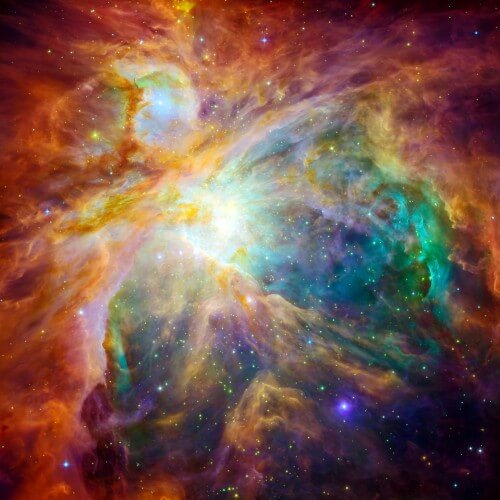ULTRASAT, which will receive waves in the ultraviolet range, will be based on a new approach: it will observe a relatively wide arc of the sky with low resolution, with the aim of detecting transient events, such as the sudden explosion of a distant star.

Smaller, lighter, faster to build, more convenient to launch, and costs about a tenth of the large telescopes of our time: this is the idea behind a unique collaboration between scientists from the Weizmann Institute of Science and California, industrialists in Israel and the United States, and NASA. "The proposed project," says Prof. Eli Waxman, an astrophysicist from the Weizmann Institute of Science, "may lead to a new era of space exploration, based on a fast and flexible program of small, dedicated telescopes, which will expand the boundaries of astrophysical research." Among other things, they may allow us to understand how black holes grow, and solve mysteries such as the source of cosmic radiation.
The project called ULTRASAT (acronym for Ultraviolet Transient Astronomy Satellite), will benefit from the unique experience that Israel has acquired in building small satellites, as well as from the strengthening of scientific cooperation between astrophysicists at the California Institute of Technology (Caltech) and the Weizmann Institute of Science. A number of scientists from the Weizmann Institute (besides Prof. Waxman) are currently involved in the project: Prof. Avishi Gal-Yam, Prof. Oded Aharonson, Dr. Eran Ofek and Dr. Ilan Shagiv. The group is assisted by Jeremy Topaz and Ofer Lapid, engineers with extensive experience in the field of satellites. Other participants in the project are Prof. Sherry Kulkarni, the American leader, and his staff from the California Institute of Technology, NASA's Ames Research Center, the American Jet Propulsion Laboratory (JPL), and scientists from Tel Aviv University.
ULTRASAT, which will receive waves in the ultraviolet range, will be based on a new approach: it will observe a relatively wide arc of the sky with low resolution, with the aim of detecting transient events, such as the sudden explosion of a distant star. When such an event is detected, the satellite's real-time communication systems will alert other telescopes from around the world, with higher resolution, and these will be able to track the event with high precision.
One of the events that the ULTRASAT telescope will look for is supernovae - the dying flickers of exploding stars. To understand the process leading to a supernova explosion, scientists must observe the event and measure it as it occurs - right when the explosion begins. Up until now, detecting supernovae in their early stages has been mainly down to luck, "however, when the ULATRSAT searches for them," says Prof. Waxman, "it will be possible to detect hundreds of supernovae, some within a few minutes of the start of the explosion."
Another phenomenon that scientists are interested in observing in real time is the "tearing" of stars as a result of tidal disruption events - the extreme gravitational forces exerted on stars when they are torn apart by the gravitational force of black holes. ULTRASAT is expected to detect about 100 such events every year, thus allowing scientists to measure the phenomenon, and to advance in understanding the physics of black holes and the space around them.
The scientists also hope that ULTRASAT's watchful eye will help them shed light on additional, more elusive events. For example, we may be able to identify the mysterious origin of the neutrino particles. These particles are emitted on the Earth from some unknown cosmic source, but it is very difficult to distinguish them and measure them. If scientists manage to link the rare measurements of these particles hitting the Earth with some event taking place in space, we will have an important clue about their origin.
Another example is gravitational waves - a kind of light ripples in space-time whose existence is assumed to be part of the theory of relativity, but they have never been observed in practice. Scientists believe that it may be possible to detect gravitational waves generated by two large and nearby masses, such as, for example, two medium-sized black holes in the process of merging. It is possible that a wide-range observation, such as the one that ULTRASAT will allow, will make it possible to identify the emission of light from such rare events.
According to the proposal for the construction of ULTRASAT, which will be submitted to the heads of NASA next year, the launch is scheduled to take place in 2019. Until then, the Israeli Space Agency will partially fund the project's feasibility study. The basis for the satellite is to be produced by the Israeli Aerospace Industry; The "Al-Op" company (located in the Science Park in Kiryat Weizman, near the Weizman Institute of Science) will build the telescopes; The Jet Propulsion Laboratory (JPL) will provide special cameras capable of photographing ultraviolet radiation that will enable the observations; And the NASA-Ames Center will provide the communication system that will allow the immediate distribution of a warning (on the Internet) about the discovery of a variable source of supernovae. The satellite assembly will be carried out in Israel. Its launch into low orbit in space and continued communication with it will be done by NASA, and the research will be the property of scientists from the Weizmann Institute of Science and the California Institute of Technology.
Video: NASA
The entry ultrasat in Wikipedia
